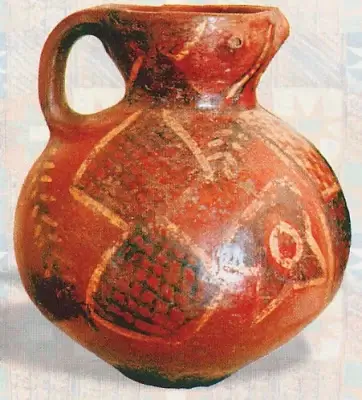
Arequipa hides great archaeological wonders, although undoubtedly the Colca Canyon is its main tourist attraction, you can also find multiple archaeological and historical wonders, such as the Archaeological Complex of Churajon; these sanctuaries will bring a distinctive touch to your trip to Peru.
Come and visit Churajón, and get involved in the history of the pre-Columbian settlers who inhabited these mountains.
Table of Contents
The development of the Churajon culture took place after the fall of the Tiahuanaco and Wari, in the year 1050 A.D. approximately.
In the studies and excavations carried out in this complex, sculptural ceramics representing certain aspects of daily life were found, as well as ceramics of religious use, such as the representation of the goddesses of fertility, as well as ceramics of daily use.
The way of elaboration was by means of the use of clay, and adorned with incrustation of pyrite, quartz and other elements, although the elaboration of the mass was not very good during the Early Churajón period, since they presented lumps of raw mass, it is possible to appreciate the advance and the improvement of techniques as the time passed.

The architecture as well as the urban planning of Churajón are characterized by the staggered terraces, in which houses were built for the settlers, but it is very remarkable that at the beginning of its development, there was no adequate urban planning, so there is a disorderly pattern in the terraces, with closed alleys, and spaces without exits.
But as with ceramics, the improvement in terms of urban development is denoted with the advance of the Churajon, developing specific buildings for the development of pottery, textiles and goldsmithing, it is important to note that all buildings are made of unhewn stones joined with clay mortar and clay.
It is also concluded that this society must have been led by a Curaca from an elite or noble family, since in the chronicle of Juan Huranca it is written that "…the last Curaca of the ancient Puluguayas of Churajón, King Sacrum, was defeated when he faced the armies coming from Titicaca…".
As for the development of livestock, this town was dedicated to the breeding of guinea pigs, alpacas and llamas, from which they obtained meat, the basis for their diet, they obtained the wool of these camelids for their clothes, as well as a means of transport for their products, by using the llama as a pack animal.
In addition, these animals provide valuable "guano" which was an important fertilizer for their lands as well as serving as fuel.
The use of the leather of these animals also served to make straps, sandals, and ropes that are used mostly to tie the beams of the roofs.
In the place there was also the finding of burials in square and circular tombs, in addition to finding "Chullpas", which would be clear evidence of the influence of the Tiahuanaco. The burials were in fetal position, with ceramic offerings which were filled with food and water, so that the person would not suffer hunger in his next life.
The ruins of what was the city of Churajon were discovered during the year 1904 by Max Uhle, who published all his findings in his book "La Cultura Puquina", the book was published in 1949, but was later edited by the Universidad San Agustin de Arequipa in 1958.
It should be noted that it was known of the existence of this place.
Located 40 km from the city of Arequipa, in the community of Colobaya, taking the same route as the Chapi Sanctuary at an altitude of 3060 m.a.s.l. in Peru.
The access road to the archeological sanctuary of Churajón is an authorized trail for cars, 8.5 km from the Administrative Center.